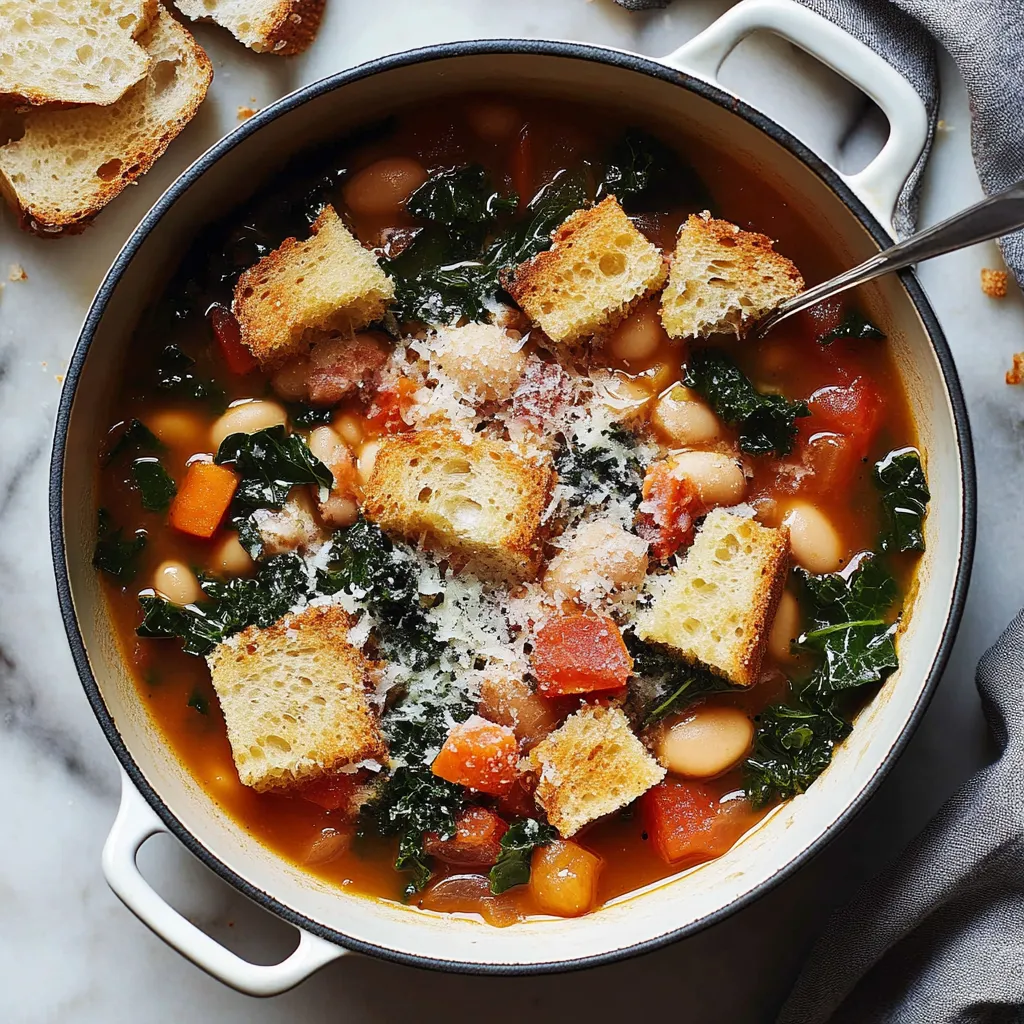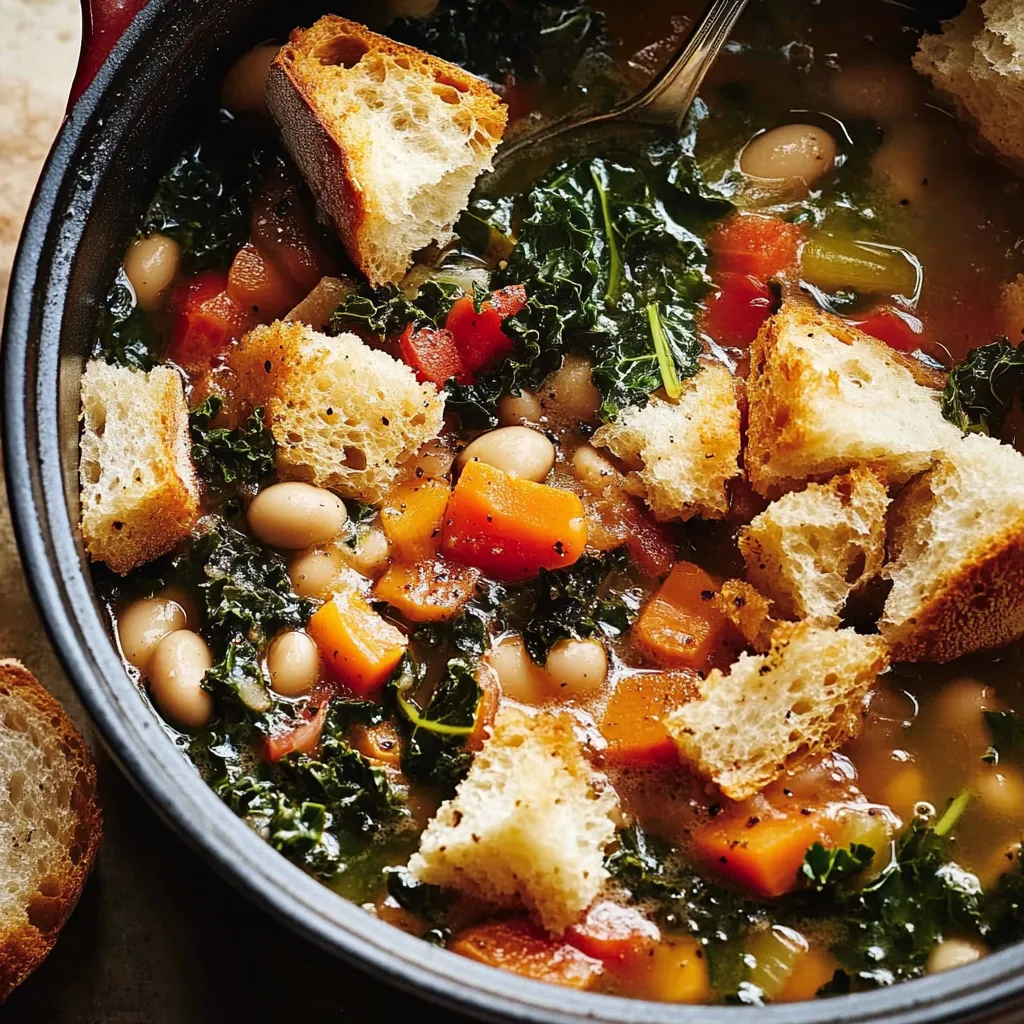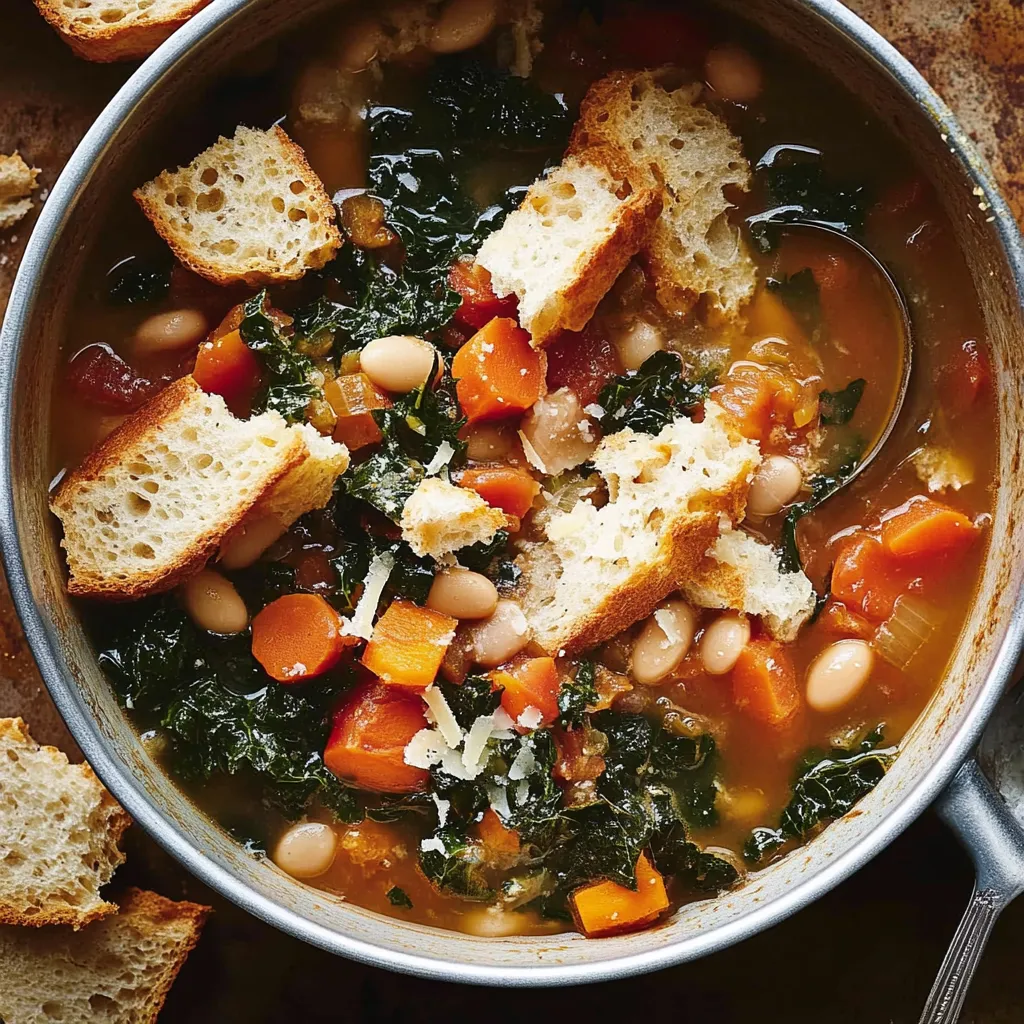 Pin it
Pin it
Italian "reboiled" Ribollita turns basic ingredients into a filling, comfort-food soup that shows off what Tuscan country cooking is all about. This clever dish proves yesterday's bread and basic veggies can make something amazing.
After diving into old-school Tuscan cooking methods, I've found that real ribollita depends on slowly building up tastes and grabbing the freshest simple stuff you can find.
Key Components
- Stale Bread: Tough country loaf or sourdough
- Cannellini Beans: The go-to white beans in Tuscany
- Tuscan Kale: Sometimes called cavolo nero
- Great Olive Oil: Grab your fancy bottle for cooking and finishing
- Rosemary Sprigs: Gives that must-have smell and taste
- Cheese Rind: Makes the broth way more flavorful
- Garden Veggies: Needed for the soffritto foundation
- Decent White Wine: Adds a nice tang and zip
Step-By-Step Cooking Guide
- Getting Bread Ready (15 minutes):
- Slice bread into chunks about an inch big. Lay them out on a tray. Toast until they're totally dry. Cool them down completely. Put aside till you need them.
- Whipping Up Soffritto (12-15 minutes):
- Warm olive oil in a heavy pot. Toss in chopped onion, carrot, and celery. Cook them gently until soft. Sprinkle salt to help get their juices flowing. Give them a stir now and then so they don't brown. Throw in garlic right at the end.
- Starting Your Soup (10 minutes):
- Toss in rosemary until you can smell it. Splash in white wine. Let it bubble away until half is gone. Drop in tomatoes with all their juice. Mix in beans and broth. Throw in your parmesan rind. Heat until it's barely bubbling.
- Letting Flavors Mix (20-25 minutes):
- Keep it at a low bubble. Stir every so often. Let everything get friendly. Check if beans are soft enough. Toss in kale and cook till it wilts down. Fish out the cheese rind.
- Putting It All Together:
- Slowly add your toasted bread. Gently mix everything up. Wait for bread to soak up the liquid. Make it as thick or thin as you want. Taste and add salt if needed. Drizzle with your best olive oil.
 Pin it
Pin it
My big aha moment with this dish came when I realized ribollita needs to sit after cooking so the bread can really soak up all that soupy goodness.
Pro Kitchen Secrets
- Keep cheese rinds in your freezer just for soup making
- Use olive oil at two points: cooking and finishing
- Chop all veggies the same size so they cook evenly
Fixing Common Problems
- If It's Like Cement: Slowly pour in hot broth
- If It's Too Watery: Drop in extra toasted bread
- If Bread Turns To Mush: Toast it longer before adding next time
 Pin it
Pin it
Prep-Ahead Plans
- Cook the soup base without adding bread
- Keep your bread in a separate container
- Don't mix in kale if you won't eat it right away
Keeping It Fresh
- Soup base stays good for 3 days in the fridge
- Store bread at normal room temp
- Freeze the soup without any bread in it
Twists and Local Takes
- Some places throw in pancetta for extra flavor
- You can swap in whatever greens are in season
- Certain versions include chunks of potato
This Ribollita really shows what Tuscan cooking is all about - turning ordinary stuff into something special just by taking your time and using good technique. Whether you have it for lunch or dinner, it's a reminder that great food often comes from making the most of what's around. Every bowlful tells a story about being resourceful and following traditions that Italian families have passed down for ages.
 Pin it
Pin it
Frequently Asked Questions
- → Do I need old bread or fresh works too?
- Traditional calls for stale bread, but fresh bread can be dried in the oven for 10-20 minutes if you'd like.
- → What does Parmesan rind add?
- It deepens the broth's flavor while it cooks.
- → Can I choose how thick it is?
- Yes, you can make it thicker by adding more bread—it's entirely up to you!
- → Is kale necessary? Can I swap it?
- It's traditional to use lacinato kale, but other sturdy greens can be a good alternative.
- → What keeps this dish authentic?
- Adding stale bread as a thickener and including cannellini beans make it traditional.
